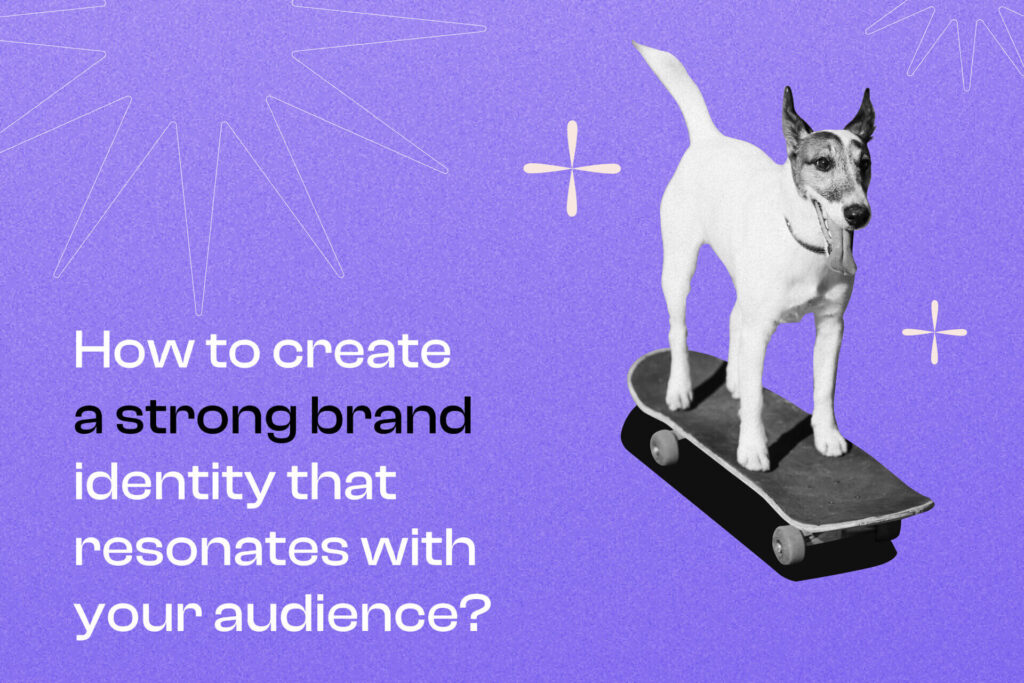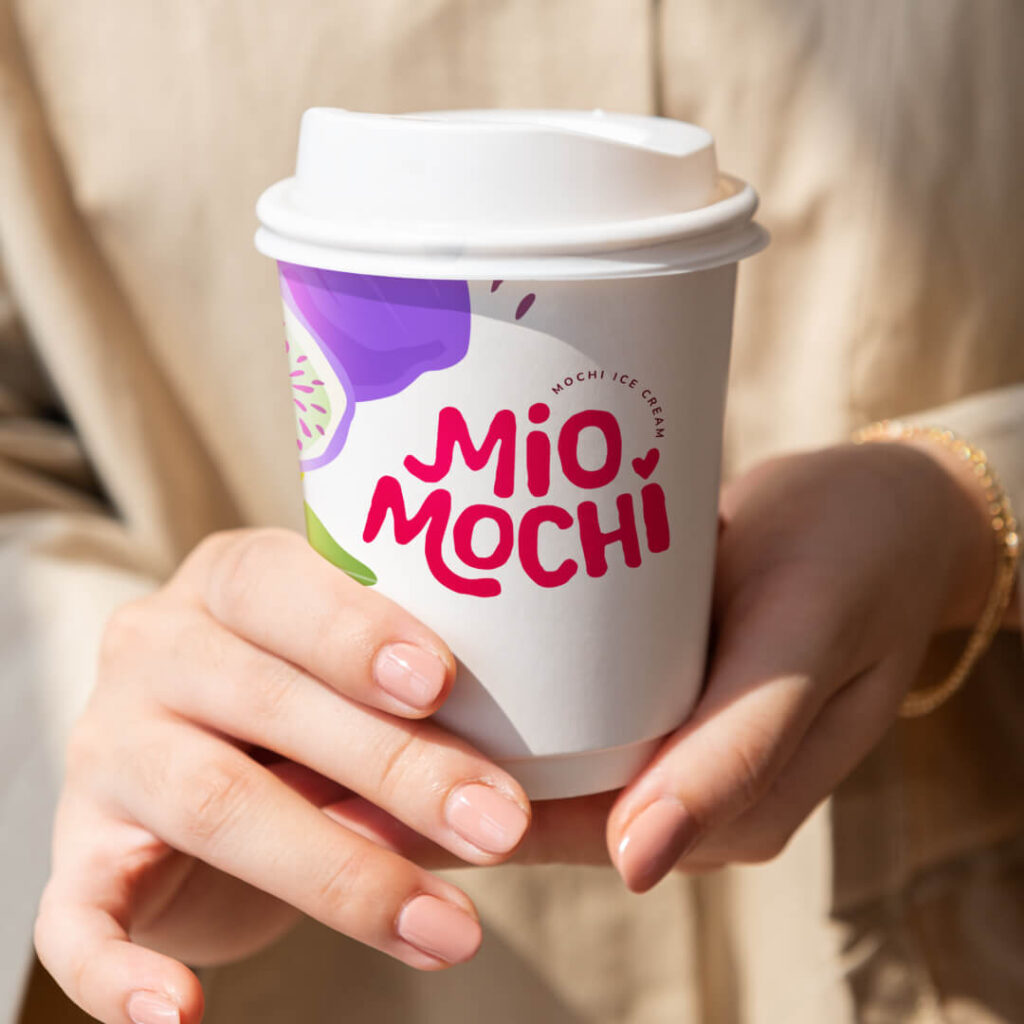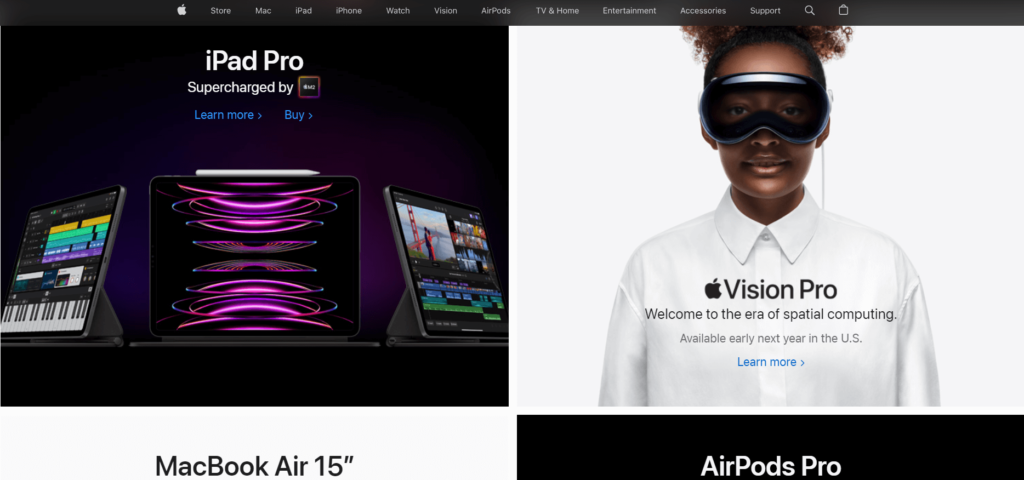In the crowded marketplace, it’s crucial for businesses to stand out. This requires building a unique brand identity that distinguishes you from competitors and connects with your target audience. A well-defined brand identity that accurately reflects your company’s values and personality can attract the right customers and foster loyalty. While it may seem complicated, a strategic and careful approach can help you craft a brand identity that truly embodies your business and appeals to your ideal customers.
This article will explore the concept of brand identity, discussing its key elements, how to develop a strong presence among your target audience, and providing examples of effective brand identities for inspiration.

Table of Contents
- Defining Brand Identity
- Building a Strong Brand Identity
- Examples of Successful Brand Identities
- Common Challenges in Creating a Brand Identity
- Summary
- Frequently Asked Questions
Defining Brand Identity

A strong brand identity is crucial to building a memorable business image, fostering customer loyalty, and driving long-term business success. Brand identity includes the visual elements, the brand personality, the brand’s beliefs, values, and purpose, and the emotional connection stakeholders feel toward the brand.
Visual Elements
A strong brand is built on a consistent visual language made up of its identity’s design elements. This includes the logo, color palette, typography selection, imagery, and iconography used to build an emotional connection with the target audience while conveying important values as part of their overall brand strategy. To ensure all these elements remain cohesive across touchpoints, it’s paramount for brands to establish a comprehensive style guide, otherwise known as brand guidelines, detailing how each element should be used to create that lasting impression on customers.
Download the Summary of How To Create a Strong Brand Identity That Resonates With Your Audience now!
Don't have time to read everything or need a summary of the key points?
Brand Personality
The distinct character of a brand and its core principles are known as the brand personality, which also plays a vital role in differentiating a company. Brand personality encompasses various elements, such as the brand’s vision, mission, principles, values, and the unique voice and tone the brand communicates to its target audience. Let’s consider Patagonia, a company that sells outdoor clothing and gear. It is a real-life example of a good brand with a distinct vision, mission, principles, values, and tone.
Patagonia’s vision is to save our home planet. Their website states that their mission statement is: “We’re in business to save our home planet.” This mission is a bold and straightforward declaration of their commitment to environmental preservation.
Their principles and values are reflected in their commitment to sustainability and ethical practices. Patagonia is known for using recycled materials in their products, donating a portion of their profits to environmental causes, and advocating for policies that protect the environment.
As for the brand’s tone, Patagonia communicates sincerely, passionately, and rebelliously with its audience. They are fearless in taking a stance on environmental issues and challenging the status quo. This tone resonates with their target audience of outdoor enthusiasts who share their love for nature and commitment to preserving the environment.
Emotional Connection
Creating a strong emotional bond between your brand and customers is essential to a successful brand identity. This kind of connection promotes engagement, trust, and loyalty, which provide immense long-term value to the business.
Social media platforms are fantastic tools for cultivating a connection. They provide countless possibilities for brands to define who they are, express themselves through content, and interact more intimately with people from the desired demographic. Understanding customer feelings while considering what drives their demand will turn your product or service into a need, not just another want, amongst many others on the market.
Building a Strong Brand Identity

Having appreciated the key elements of brand identity, we will now investigate the step-by-step process of how to create a strong one.
Conduct comprehensive market research.
- Understand the competitive landscape: This involves thoroughly analyzing your competitors, their strengths, weaknesses, and unique selling propositions. By understanding what your competitors are doing, you can identify gaps in the market and opportunities for differentiation.
- Identify unique opportunities: This could be an unmet need in the market, a new trend, or a potential innovation that could give your brand a competitive edge.
- Gaining a deep understanding of your target audience involves understanding their needs, preferences, and behaviors. What motivates them? What challenges do they face? What are their goals and aspirations? This understanding will help you create a brand identity that resonates with them and meets their needs.
Choose the right name for your brand.
- Choosing the right name is critical in creating a strong brand identity. The name should be unique, memorable, and reflective of your brand’s core values. It should also be easily pronounceable and suitable for your target market.
- Domain selection: The chosen name should also be available as a domain name for your website. The domain name should be short, easy to remember, and easy to type. It’s advisable to choose a .com domain as it is the most recognized and trusted domain extension.
- Reviewing name variations: Consider various iterations and spellings of your potential brand name. Look at it from different angles and contexts to ensure it doesn’t have any unintended meanings or connotations.
- Phonetic sound: The brand name should have an excellent phonetic sound. It should be easy to pronounce and sound pleasant to the ear. This is particularly important if your international target market includes non-native English speakers.
- Legal uniqueness: Ensuring your chosen name is legally unique is crucial. You can do this by searching for a trademark to ensure the name isn’t already in use or trademarked by another company. If the name passes all these checks, it’s advisable to register it as a trademark to protect your brand’s intellectual property.
Craft a brand mission, vision, principles, values, and tone.
- Identify and define your brand’s core values: what does your brand stand for? What principles guide your business operations? What are the beliefs and ideals that your brand holds dear? These core values should be the foundation of your brand’s identity and be reflected in every aspect of your business, including your products, services, and customer interactions.
- Define your brand’s mission: what is the main objective of your brand? Can you write a clear and compelling mission statement that outlines this? This statement should provide a clear direction for your business and should resonate with your target audience.
- Establish your brand’s vision: where do you see your brand in the future? Can you write a forward-looking statement that outlines this? It should be aspirational and inspiring, giving your audience a clear idea of what you’re striving to achieve.
- Develop your brand’s principles: what rules or beliefs guide your brand’s actions? They should align with your core values and reflect in all your business decisions and actions.
- Craft your brand’s tone: what is your brand’s voice, and how does it communicate with its audience? It should be consistent across all platforms and reflect your brand’s personality and values.
- Align all elements: do your brand’s mission, vision, principles, values, and tone align with each other and your overall business goals? They should also resonate with your target audience and differentiate you from your competitors.
- Review and update regularly: as your business evolves, so should your brand’s mission, vision, principles, values, and tone. Periodically review these elements to ensure they remain relevant and accurately reflect your brand.
Develop your brand’s visual identity.
When developing your brand’s visual identity, consider including the following elements:
- Logo: this is the face of your brand and should be unique and memorable. Is your logo distinctive enough to be immediately recognized? Does it reflect your brand’s personality and mission?
- Color palette: Your chosen colors should evoke the emotions and feelings you want associated with your brand. Do your chosen colors align with the emotions you want your brand to evoke? Are they visually appealing to your target audience?
- Typography: Your fonts should be consistent and reflect your brand’s personality. Does your typography match your brand’s tone and message? Is it readable across various platforms and sizes?
- Imagery: This includes photos, illustrations, and other graphics that support your brand message. Are your images consistent with your brand’s message? Do they appeal to your target audience?
- Brand style guide: this document ensures consistency across all platforms and business and marketing operations. This can include instructions on print materials, packaging, website, application designs, and the above core visual identity elements. It could also have branded templates & kits to make generating on-brand visuals on an ongoing basis easier. Consider other elements depending on the nature of your business and its day-to-day marketing activities. Does your style guide clearly define how your visual elements should be used? Does it provide clear instructions for different scenarios and platforms?
Ongoing communication and feedback collection
- Continuously communicate your brand identity with consistency.
- Once you’ve established your brand identity, it’s crucial to constantly communicate it to your audience. Creating and using a set of brand assets is vital to ensure brand consistency across all platforms. Use your established visual language and brand tone across all platforms—from your website to your social media channels—to reinforce your brand identity. Consistency in visual and emotional communication is essential to brand recognition, trust, and customer loyalty.
- Studies show that up to 81% of consumers state that they need to be able to trust the brand to buy from them. Consistent brand identity plays a significant role in this, as businesses that present their brands consistently are 3 to 4 times more likely to experience brand visibility and are 20% more successful than those without consistent branding.
- Collect feedback and improve.
- Moreover, collecting feedback from your customers on an ongoing basis is essential. This ensures your brand identity remains relevant and effective with evolving market trends. Regularly survey your customers, asking for their thoughts on your brand and any changes they’d like to see.
- Keeping a close eye on how your brand is performing can help uncover areas needing improvement and measure the success of branding initiatives. Examining metrics such as recognition, client satisfaction, and brand equity provides an essential look into what people think about your company’s reputation in the industry.
- Utilize tools such as Google Analytics, social media monitoring, and customer surveys to gauge the effectiveness of your brand identity. This data-driven approach will enable you to make informed decisions to enhance your brand’s image further. Use this feedback to strategically adjust your brand identity, keeping it as effective and engaging as possible.
Examples of Successful Brand Identities

Successful brands such as Apple, Nike, and Tesla have built strong brand identities by strategically using visual elements, unique brand personalities, and building emotional connections. Their effective use of these elements has allowed them to establish a powerful connection with their customers resulting in a strong brand image.
Apple
Apple has crafted a powerful brand image based on modern minimalist design and its dedication to innovation in user experience. Their world-famous logo showcases the company’s commitment to cutting-edge technology products with premium quality, fostering an aura of sophistication and fresh ideas surrounding them. It is this strong branding that has been instrumental in Apple’s long-term success as well as continued growth within the tech industry.
Nike
Nike is recognized for its remarkable performance, pioneering innovations, and motivating sportspeople of all levels. The recognizable swoosh symbol and the “Just Do It” slogan have both been deeply absorbed in popular culture as a reflection of their pledge to motivate individuals through physical exercise and sport.
The spirited brand identity associated with Nike continues to help it retain its position at the forefront among other athletic clothing and footwear companies. This is due to the strong image they portray, featuring energy-filled promotions that challenge conventional standards plus creative product designs.
Tesla
Tesla’s brand positioning is unique in its emphasis on sustainability, modern technology, and a creative outlook toward transportation. Its logo design mirrors the company’s commitment to creating electrical cars and renewable energy sources.
Many people have perceived the persona of Tesla to be forward-thinking, progressive, and eco-friendly. These qualities that founder Elon Musk believes will lead us into an ecological future. This distinct branding identity allows Tesla to stand out amongst automotive brands with their electric vehicle advancements. It has tremendous strength within this industry sector, giving it immense power within this industry sector.
Common Challenges and Solutions in Creating a Brand Identity

Developing a brand identity can be challenging, especially when resources and expertise are limited. It’s crucial to differentiate from competitors while maintaining brand consistency. Investing in the right tools and understanding your target audience can create a memorable brand identity that truly represents your business.
Limited Budget and Expertise
Small companies and new startups often have limited funds to spend on developing a strong brand identity. Fortunately, with the help of professional design agencies, there are cost-effective options available that can assist them in creating an impressive brand image without breaking the bank.
Differentiating from Competitors
Creating a distinct brand identity is paramount to stand out from the competition. Recognizing and communicating your unique value proposition (USP) through this new brand identity is vital to attracting target consumers. It can be beneficial for any business owner looking into creating their own brand or revamping an existing one if they perform a thorough competitive analysis of others’ branding strategies and identify opportunities that will set them apart from other brands on the market.
Maintaining Consistency
For a cohesive brand experience, it is crucial to maintain consistent messaging across all customer touchpoints. This can be accomplished by strictly adhering to a comprehensive brand style guide that outlines the proper usage of visual elements, language, and brand voice. Ensuring alignment with these standards promotes a unified and easily identifiable brand, guaranteeing customers a consistent interaction with the company’s image.
Summary
To develop a compelling brand identity, you must understand your target market and clearly define your brand’s mission and core values. This unique identity will differentiate you from competitors and, when coupled with a distinctive visual language, will leave a lasting impression on your audience, which is crucial for building a strong brand presence and ensuring business longevity.
By adhering to the best practices discussed in this article, you can develop a brand that resonates with its target audience. Once this brand identity is established, it is essential to maintain vigilance and continually apply it consistently to ensure its effectiveness in building customer trust and loyalty is at no point undermined. Your brand image must also evolve to stay relevant. You can achieve growth and success by keeping up with motion graphics trends and understanding your audience.. Creating an effective brand identity takes work but is an exciting journey of evolution, adaptation, and growth.
Frequently Asked Questions
What is brand identity?
Brand identity is a unique collection of design elements, such as colors, logos, and graphics, that a brand uses to portray itself to the world. It’s the visual representation of the brand’s values, personality, and product, distinct from the brand image, which is how customers perceive the brand based on their interactions with it.
What makes a strong brand identity?
A strong brand identity is grounded in a deep understanding of your target audience, clearly defined brand values, and consistent visual language that represents these values. It’s essential to stand out from competitors by conveying a unique value proposition and maintaining brand consistency across all customer touchpoints. This involves conducting comprehensive market research to understand the competitive landscape and your target audience’s needs and preferences.
Choosing the right name for your brand that reflects its core values is also crucial and is easily pronounceable and suitable for your target market. Your brand’s mission, vision, principles, values, and tone should align with each other and with your overall business goals. The development of your brand’s visual identity should include elements such as a unique and memorable logo, a color palette that evokes the desired emotions, consistent typography, and imagery that supports your brand message.
A comprehensive style guide or brand guidelines can ensure these visual elements remain cohesive across all platforms. Lastly, ongoing communication and feedback collection are crucial to ensure your brand identity remains relevant and effective. By following these steps, you can create a brand identity that resonates with your customers and stands out in the market.
How much time does brand identity design take?
The length of time required for brand identity design can vary significantly depending on several factors. These factors include the complexity of the brand, the number of decision-makers involved, the level of research required, and the number of design iterations needed. On average, creating a comprehensive brand identity can take a few weeks to several months. It’s important to remember that brand identity design is a critical process that should be completed on time. Researching, designing, and refining your brand identity thoroughly can result in a stronger, more effective brand that resonates with your target audience.
How much does brand identity design cost?
The cost of brand identity design can vary greatly depending on several factors. These can include the complexity of the brand, the number of design elements needed, the level of research required, and whether an external agency or freelance designer is hired. Costs can range from a few hundred to several thousand dollars. It’s important to remember that while brand identity design is an investment, a well-crafted brand identity can significantly contribute to a company’s success.
Passionate Design Agency also offers affordable branding services, making them an excellent choice for businesses of all sizes.
Who creates a brand identity?
Creating a brand identity is a collaborative process that often involves multiple specialists. Depending on the project’s complexity, the team might include graphic designers for creating visual elements such as logos and color palettes, content creators for crafting the brand’s voice and messaging, and marketing strategists for aligning the brand identity with the company’s overall business strategy. Additionally, market researchers may be involved in understanding the target audience and competitive landscape.
Sometimes, especially for smaller businesses or startups, a single person or a small team might wear multiple hats and handle all aspects of brand identity creation. However, companies often turn to agencies specializing in brand identity creation for larger or more complex projects.
One such agency is Passionate Design Agency. With a team of dedicated specialists in various areas, they are equipped to handle all aspects of brand identity creation, from initial research and strategy to design and implementation.